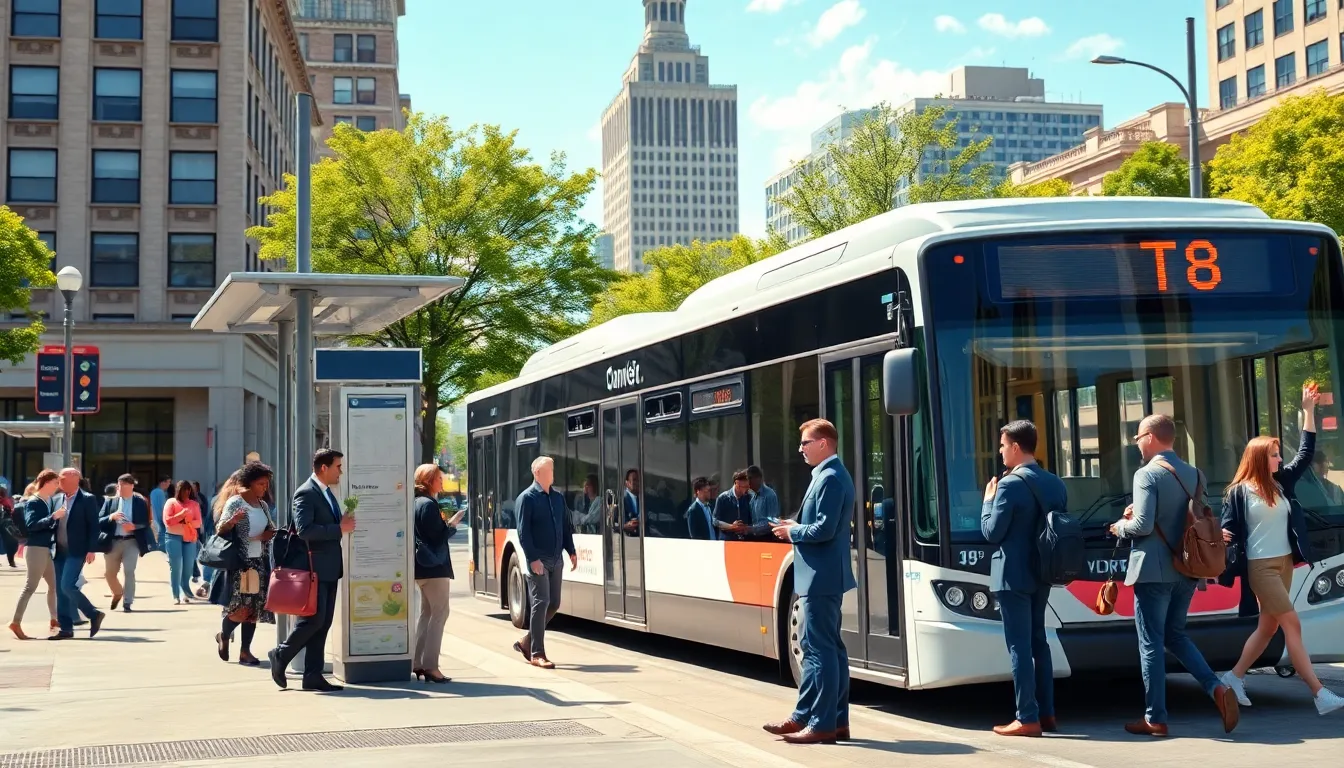Table of Contents
ToggleMilwaukee’s public transit might not have the glitz of a Hollywood blockbuster, but it certainly has a story worth telling. Picture this: you’re in the heart of Milwaukee, ready to explore its vibrant neighborhoods, renowned breweries, and the stunning shores of Lake Michigan, all without the hassle of parking. That’s where public transit steps in like the heroic sidekick you never knew you needed. In this guide, we’ll jump into the nuts and bolts of Milwaukee’s public transit system, unravel its historical journey, spotlight current offerings, weigh its perks and challenges, and even peek into what the future holds. So strap in, because navigating the public transit world in Milwaukee isn’t just convenient: it can be quite an adventure.
Milwaukee Public Transit

Milwaukee’s public transit journey dates back to the late 19th century, when horse-drawn streetcars made their debut in 1860. Fast forward to the early 1900s, electric streetcars were introduced, revolutionizing the way Milwaukeeans traveled. By the 1920s, the Milwaukee Electric Railway and Light Company had expanded the network, making it one of the most efficient tramway systems in the nation. Unfortunately, the rise of the automobile in the mid-20th century led to a decline in public transit utilization and in 1958, the city replaced the electric streetcars with buses. This transformation wasn’t just about convenience: it represented a pivotal shift in urban mobility. A few decades later, efforts to revitalize and modernize the system have continued, reigniting interest in effective public transit solutions to mitigate traffic congestion and promote environmentally friendly travel.
Current Transit Systems Available
Today, Milwaukee boasts a range of public transit options catering to diverse needs. At the forefront is the Milwaukee County Transit System (MCTS), which operates over 60 bus routes throughout the city and surrounding suburbs. MCTS provides essential connectivity for residents and visitors alike. The system isn’t just reliable: it’s also budget-friendly, with daily and monthly passes available to ease commuting costs.
Plus to standard buses, Milwaukee recently launched the Milwaukee Streetcar, also known as “The Hop.” This electric streetcar service connects key downtown districts with an emphasis on revitalizing the city’s urban core. Its modern design and convenient stops make it a favorite for locals and tourists looking to navigate the heart of Milwaukee.
There’s also the option of regional connections through the Wisconsin Coach Lines and Amtrak, allowing for easy access to nearby cities. Whether commuting for work or exploring the city’s charming neighborhoods, Milwaukee’s public transit system has progressively evolved to meet the demand.
Benefits of Using Public Transit in Milwaukee
Choosing public transit in Milwaukee comes with a cornucopia of benefits. For starters, it’s economically advantageous. Riding the bus or streetcar is far cheaper than maintaining a vehicle, think rising gas prices, insurance, and pesky parking fees. Plus, for those who enjoy a little fresh air and exercise, public transit encourages walking, as most stops are conveniently located.
Environmental enthusiasts will also find solace in Milwaukee’s transit offerings, as using public transport reduces carbon footprints. With efforts to enhance efficiency and promote electric options like The Hop, riding a bus or streetcar contributes to cleaner air and less congestion.
Also, public transit often fosters a sense of community. As commuters share rides, they may strike up conversations, meet new friends, or discover hidden gems in the city. The opportunity to engage with fellow Milwaukeeans adds an enriching social aspect to daily travel.
Challenges Facing Milwaukee Public Transit
Even though its growing utility, Milwaukee’s public transit system faces several hurdles. One major challenge is funding. Many cities grapple with budget constraints, and Milwaukee is no exception. Limited funding can lead to reduced services or delayed improvements, making it difficult to keep up with the evolving demands of residents.
Another issue is accessibility. While MCTS and The Hop have made strides in accessibility features, barriers still exist for those with disabilities, making it harder for some individuals to navigate the system. Besides, public perceptions of safety can deter potential riders. Addressing these concerns through outreach and community engagement is vital for fostering trust and increasing ridership.
Finally, Milwaukee’s urban sprawl presents logistical challenges. As the city expands, ensuring adequate coverage in outlying neighborhoods remains a complex battle that transit planners continue to address.
Future Developments in Milwaukee Public Transit
Looking ahead, the future of Milwaukee public transit is showing promise. There are plans for the expansion of bus rapid transit (BRT) routes, designed to offer quicker and more efficient service between key areas and neighborhoods. This mode of transit is increasingly popular in urban environments, with dedicated lanes minimizing delays and enhancing commute speed.
Also, sustainability remains a top priority. The city is exploring the implementation of more electric buses and alternative fuel options to reduce emissions and increase energy efficiency.
Also, Milwaukee is examining the integration of technology into its transit systems. Real-time tracking apps and smart ticketing can make traveling more seamless for riders, improving the overall experience and encouraging more people to hop on board.
How to Navigate the Milwaukee Public Transit System
Navigating Milwaukee’s public transit system is a breeze with a bit of preparation. Start by familiarizing oneself with the MCTS website or mobile app, where users can access route maps, schedules, and fare information. The app even provides real-time updates, which means waiting for a bus can become a thing of the past.
Before setting out, it’s good to have a plan. Identify the nearest bus stop or streetcar stop using the map feature to ensure a smooth journey. For those unsure about the best route, the interactive trip planner provides tailored options to get from point A to B quickly.
Remember to keep an eye out for special services, like the Super Route, which offers limited-stop service during busy hours, making it ideal for commuters. Pay attention to the available discounts for students, seniors, and persons with disabilities: they make the system even more accessible. With a bit of knowledge, navigating the Milwaukee public transit system can offer an enjoyable and economical commuting experience.




